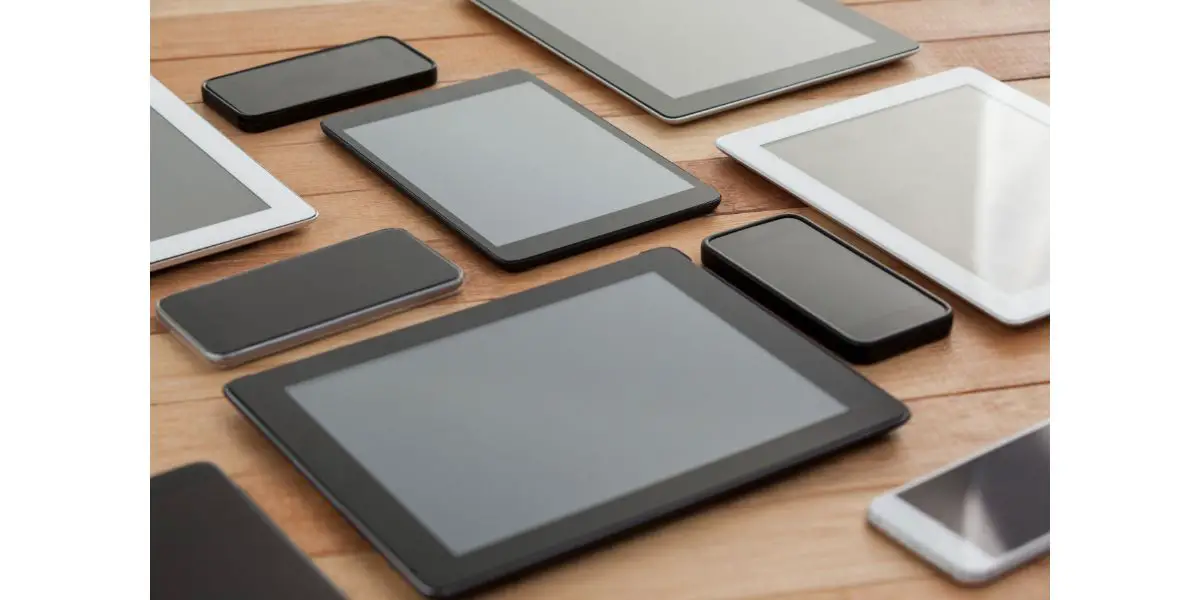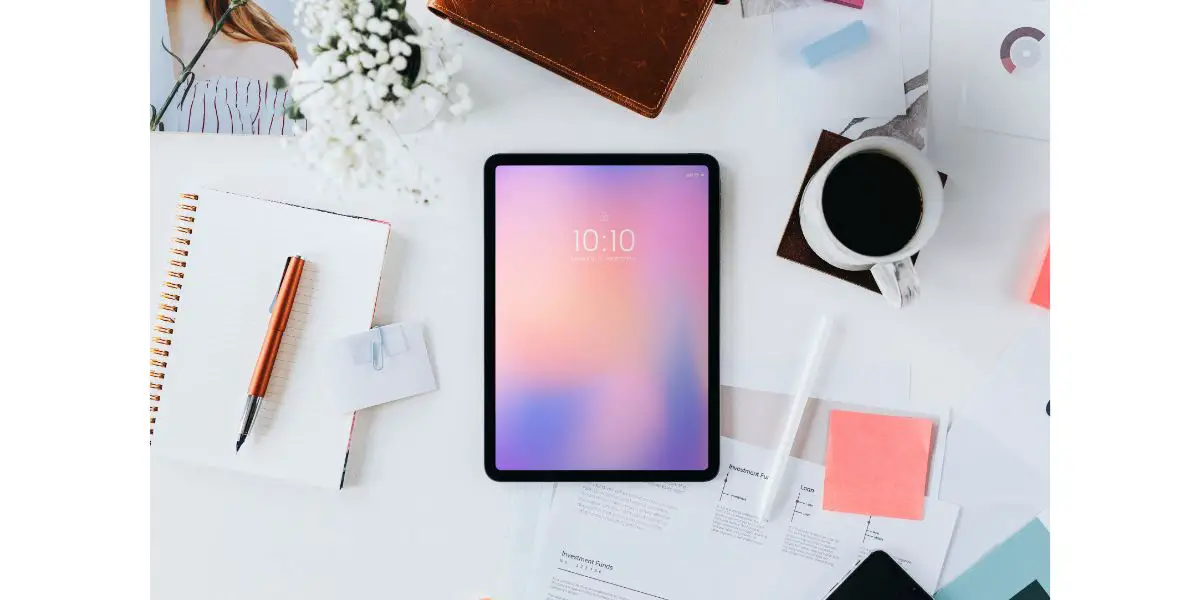Disclaimer: This post may contain affiliate links, meaning we get a small commission if you make a purchase through our links, at no cost to you. For more information, please visit our Disclaimer Page.
Modern technology turned the basic tablet into a miniature computer that can do most of the same things your PC can. The problem is that tablets are much smaller, which means that they have less RAM. Learn mow about why tablets have less RAM and why it’s important.
Table of Contents
Why Do Tablets Have Less RAM?
A tablet is essentially a small device that combines the top features of a PC and a mobile device such as a cell phone. You can download and read e-books, play video games, check your email, edit documents, and surf the web or send emails.
In most cases, a tablet cannot replace your PC. It serves more as a fun addition to your life. Tablets have less RAM and storage space than PCs do for several key reasons.
1. DPI Number
DPI stands for Dots Per Inch and refers to the number of pixels on a screen. When you compare cell phones to tablets, you’ll usually notice that a tablet has a lower DPI number than a phone does. This is because of how you use the devices.
You keep your phone close to your face and need a higher number to see all of the images clearly. As you hold your tablet further from your face, it doesn’t need as many pixels. Tablets do not need as much RAM to provide that clarity as your phone does.
2. Fewer Functions
While you can do tons of things with your tablet, you cannot do all the same things you would with a computer. Tablets perform fewer functions than computers do and have less RAM because they don’t need extra storage.
While you can look for ways to store more things on your tablet, it will never have enough RAM to replace your PC. You usually need to limit what you can do with it, too. Instead of playing a game at the same time you download a new book or another file, you often need to do one task at a time.
3. Small Processor
All tech gadgets have an internal processor that lets you know how quickly they run. Tablets always have smaller processors than computers do. While you can download an e-book in minutes or play simple games like Candy Crush, you can’t download larger files or play some of the more complex games.
You’ll notice that your tablet slows down when you try to access bigger files. As processor size and RAM go hand in hand, the small processor in the tablet cannot support more RAM.
4. Lack of Support
You need the right amount of RAM because your tablet collects and stores data every time you use it. Whether you browse the Kindle store and add some e-books to your wishlist or you spend a lot of time shopping online, your tablet will use its RAM to store cookies and other data.
As you keep using the RAM, your tablet will slow down. One reason tablets have less RAM is that they don’t need to support as many apps and programs as a computer does. This is why your PC runs faster when you download and use the same apps.
Is RAM Important in a Tablet?
RAM is one of the more important things to consider when you buy a new tablet. The amount of RAM on the tablet will help you see how many apps and programs you can download. When you open the settings, you’ll find that you already used some of the available space because your tablet comes with apps already loaded on it.
Having more RAM means that you can download more things and that your tablet is faster. Keep in mind that users need different amounts of RAM due to what they do with their tablets. Some of the other things to consider when buying a new tablet include:
- Brand: Some shoppers care a lot about brand names and stick to tablets from Samsung, Apple, and other top brands. You’ll find some tablets that cost less from lesser-known brands.
- Cost: While you can pick up a tablet for under $100, it may not have as many options or features. Tablets in the $200 to $500 range are usually better.
- Screen Size: You usually want to pick a tablet with a screen size of either seven or eight inches. Smaller screens are too similar to cell phones, while larger screens put you in laptop or netbook territory.
- Operating System: An iPad is a good option for Apple users because they can connect and sync their devices. You might prefer an Android OS to an iOS.
- Resolution: If you like playing video games and watching videos, pay attention to the resolution. Tablets now have 4K and even UDH resolution.
- Ports: Check out the number and type of ports included on the tablet. You may need one or more USB ports to connect the tablet to other devices and a slot to expand the memory.
- Weight: Consider the weight of the tablet to see how easily you can carry and use it. Most portable tablets weigh one pound or less.
- Used Accounts: For a tablet you’ll share with another person, choose one that lets you set up multiple accounts. You each get a separate account.
- Battery Life: Unless you want to feel attached to your charger, check out the tablet’s battery life. Many top models come with a battery that lasts up to 10 hours, but some last for up to 15 hours before you need to charge them.
Can Tablet RAM Be Upgraded?
You can easily start running out of RAM after using a tablet for a few days or longer. Every app you download and anything you do on it will reduce the amount of available space.
Opening your tablet to add more RAM is risky and can damage it or void your warranty. The only way to upgrade your tablet to add more RAM is with a memory card. Most tablets use a mini SD card.
Check your tablet to make sure it has an SD card slot. Insert the card right into the slot with the tablet turned off and then turn it on. Open Settings and go to Memory. This lets you see the space available and what apps and features use the most.
Move some of the bigger apps to your SD card. You can also tell the tablet always to install updates and new apps to the card. This frees up some of the RAM. You cannot upgrade the RAM in most tablets because they can only work with certain sizes.
How Much RAM Should You Get on a Tablet?
As you look at tablets, you will find that most of the cheaper brands include just 2 MB of RAM. Some of the more expensive brands include 4 MB up to 16 MB of RAM. You usually want to avoid those with the smallest amount. Not only can they run slow or sluggish, but they won’t have enough space for your apps.
A minimum of 4 MB of RAM is suitable for most users. If you want to use some complex apps and have room for photos and videos, go with 8 MB. You’ll rarely need 16 MB, but it does ensure that you never run out of RAM.
Conclusion
Tablets always have less RAM than computers and other devices do, but they can still handle most online tasks. Brands build them with less RAM because they don’t perform as many functions and have a small processor inside. While you cannot upgrade the RAM in your tablet, you can use an SD card to get more storage space.


